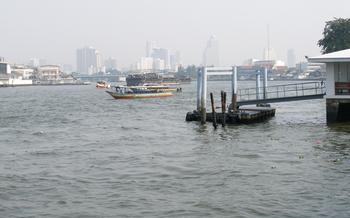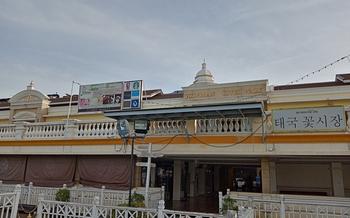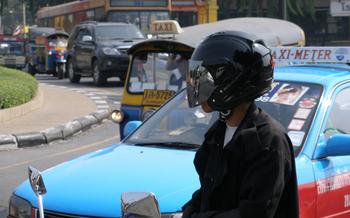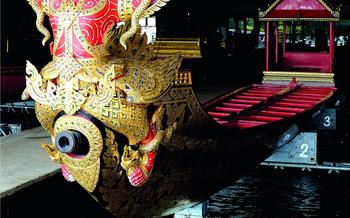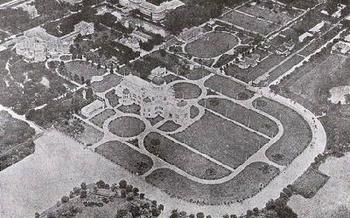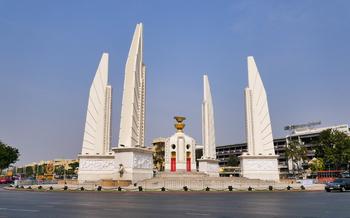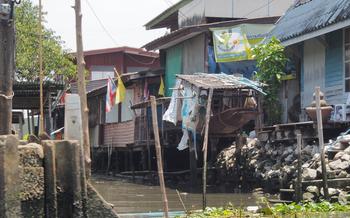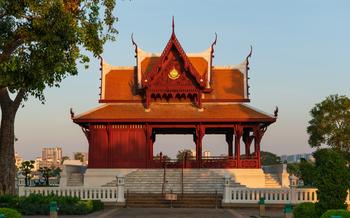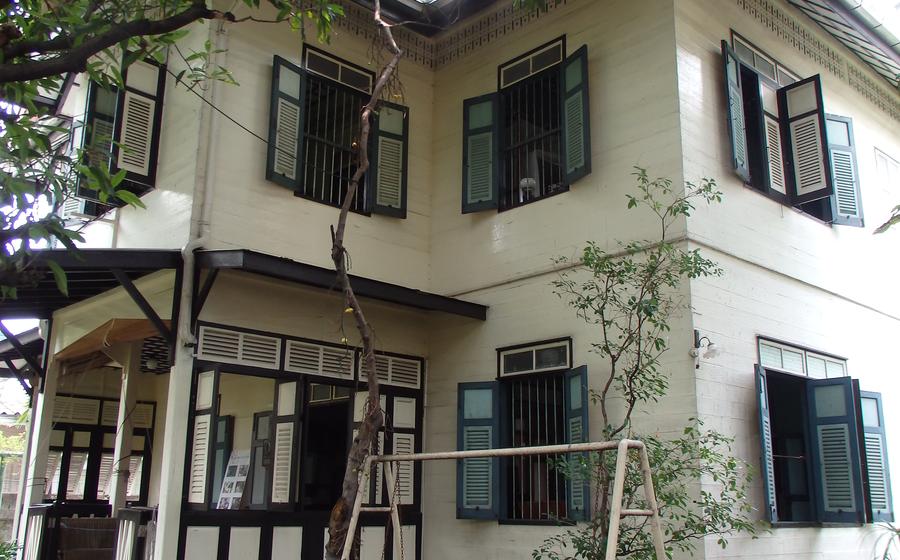
Bangkokian Museum
- The Bangkokian Museum: A Window into the City's Past
- A Journey Through Bangkok's History
- Unveiling the City's Cultural Heritage
- Exploring Bangkok's Urban Development
- City Planning and Architecture
- Infrastructure and Transportation
- Economic Growth and Development
- Urban Challenges and Solutions
- Engaging with the Museum's Collections
- Interactive Exhibits for a Hands-On Experience
- The Museum's Unique Architecture
- Exploring the Museum's Neighborhood
- Planning Your Visit to the Bangkokian Museum
- Capturing the Essence of Bangkok
- Unforgettable Souvenirs from the Museum Shop
- The Museum's Contribution to Cultural Preservation
- Stories Behind the Artifacts
- Events and Exhibitions at the Museum
- Insider Tip: Hidden Gems of the Museum
The Bangkokian Museum: A Window into the City's Past
Nestled in the heart of Bangkok, the Bangkokian Museum stands as a testament to the city's rich history and vibrant culture. This remarkable institution invites visitors to embark on a journey through time, unveiling the stories that have shaped this captivating metropolis.
Historical significance: The Bangkokian Museum holds immense historical significance as it encapsulates the essence of Bangkok's evolution from a small trading outpost to a bustling global city. It serves as a repository of the city's past, preserving and showcasing artifacts, documents, and exhibits that narrate Bangkok's transformative journey.
Location and accessibility: Conveniently situated in the vibrant neighborhood of Banglamphu, the Bangkokian Museum is easily accessible by various modes of transportation. Visitors can take a leisurely stroll from the iconic Grand Palace or hop on a tuk-tuk to immerse themselves in the city's captivating atmosphere.
Architectural style: The museum's striking architecture reflects a harmonious blend of traditional Thai and contemporary design elements. Its elegant facade, adorned with intricate carvings and motifs, pays homage to the city's rich cultural heritage. Inside, spacious galleries and well-lit displays create an inviting environment for exploration and discovery.
Museum layout and exhibits: The Bangkokian Museum's layout is thoughtfully designed to guide visitors through a chronological narrative of the city's history. The museum's exhibits are organized into thematic sections, each offering a glimpse into different aspects of Bangkok's past, from its humble beginnings to its emergence as a modern metropolis.
A Journey Through Bangkok's History
The Bangkokian Museum takes visitors on a journey through the city's rich history, from its humble beginnings as a small trading post to its rise as a bustling metropolis. Through interactive displays, ancient artifacts, historical documents, city maps, and models, visitors can explore the city's transformation over the centuries.
Ancient artifacts, such as pottery shards, bronze tools, and religious sculptures, provide a glimpse into Bangkok's prehistoric past. Historical documents, including royal decrees, trade agreements, and personal letters, offer insights into the city's political, economic, and social development. Interactive displays allow visitors to engage with the city's history in a hands-on way, simulating the experience of trading in the bustling markets of old Bangkok or navigating the city's intricate canals.
City maps and models showcase Bangkok's urban development, from its early settlements along the Chao Phraya River to its expansion into a modern metropolis. These exhibits highlight the city's unique geography, its strategic location as a trading hub, and its resilience in the face of challenges such as flooding and fires.
Unveiling the City's Cultural Heritage
The Bangkokian Museum also serves as a platform for showcasing the city's vibrant cultural heritage. Visitors can explore traditional costumes worn by locals throughout history, from elaborate silk garments to everyday attire. These exhibits provide insights into the diverse ethnic groups that have shaped Bangkok's identity.
The museum also houses a collection of handicrafts and souvenirs that reflect the city's rich artistic traditions. From intricate gold jewelry to delicate porcelain ware, these items showcase the skills and creativity of local artisans. Visitors can purchase these souvenirs as a memento of their visit and support local craftsmanship.
Cultural performances are regularly held at the museum, offering visitors a chance to experience Bangkok's performing arts firsthand. Traditional dance troupes, musicians, and puppeteers bring to life stories and legends from the city's past. These performances provide a glimpse into the cultural expressions of Bangkok's diverse communities.
The museum also delves into local customs and traditions, shedding light on the unique practices and beliefs of Bangkok's people. Visitors can learn about traditional festivals, rituals, and ceremonies that have been passed down through generations. These exhibits offer a deeper understanding of the city's social fabric and the values that bind its communities together.
Exploring Bangkok's Urban Development
The Bangkokian Museum not only showcases the city's rich history and cultural heritage but also provides valuable insights into its urban development. Visitors can delve into the intricacies of Bangkok's city planning, architecture, infrastructure, and economic growth through interactive displays, maps, models, and historical documents.
City Planning and Architecture
Bangkok's unique urban landscape is a testament to centuries of meticulous planning and architectural prowess. Visitors can explore the museum's exhibits on the city's zoning regulations, building codes, and architectural styles, gaining an understanding of how Bangkok evolved from a small trading port to a bustling metropolis.
Infrastructure and Transportation
The museum also highlights the development of Bangkok's infrastructure and transportation networks. Visitors can learn about the construction of roads, bridges, canals, and railways, as well as the evolution of public transportation systems, including buses, trains, and boats.
Economic Growth and Development
Bangkok's remarkable economic growth and development are showcased through interactive exhibits on trade, industry, and commerce. Visitors can explore the city's transformation into a regional economic powerhouse, with insights into its key industries, financial institutions, and international trade relations.
Urban Challenges and Solutions
The museum does not shy away from addressing the urban challenges that Bangkok faces, such as traffic congestion, pollution, and housing shortages. Visitors can learn about the city's efforts to address these issues through sustainable urban planning, green initiatives, and community development projects.
Engaging with the Museum's Collections
The Bangkokian Museum offers a range of engaging programs and activities that allow visitors to interact with its collections in a meaningful way. Guided tours, led by knowledgeable museum docents, provide in-depth insights into the exhibits and the history of Bangkok. These tours are available in various languages to accommodate international visitors.
For a hands-on experience, the museum hosts workshops and educational programs for children and adults. These workshops cover a variety of topics, such as traditional crafts, cooking classes, and storytelling sessions, allowing participants to learn about Bangkok's cultural heritage while creating their own unique souvenirs.
The museum also offers research facilities for scholars and researchers interested in delving deeper into Bangkok's history and culture. These facilities include a comprehensive library, archival materials, and access to the museum's collection for study and research purposes.
Additionally, the museum regularly hosts temporary exhibitions and events that showcase specific aspects of Bangkok's history and culture. These exhibitions often feature collaborations with other institutions, bringing together diverse perspectives and offering visitors a fresh and dynamic museum experience.
Interactive Exhibits for a Hands-On Experience
The Bangkokian Museum takes visitor engagement to the next level with its interactive exhibits. These immersive experiences allow visitors to explore Bangkok's history and culture in a hands-on, interactive way.
One highlight is the virtual reality tour, which transports visitors back in time to experience the city's bustling streets and vibrant markets as they were centuries ago. Visitors can also explore 3D models and simulations of Bangkok's iconic landmarks, such as the Grand Palace and Wat Pho, and learn about their architectural significance and historical context.
Interactive games and activities add a playful element to the learning experience. Visitors can test their knowledge of Bangkok's history and culture through quizzes and trivia games, or engage in hands-on activities such as traditional crafts and cooking demonstrations.
Multimedia presentations and videos bring Bangkok's past to life, showcasing historical events, cultural traditions, and the everyday lives of Bangkok's people. These audiovisual displays provide a rich and engaging way to learn about the city's diverse heritage.
The Museum's Unique Architecture
The Bangkokian Museum is housed in a historically significant building that is a testament to the city's architectural legacy. Originally constructed in the late 19th century, the building served as a government office before being repurposed as a museum. Its grand facade, adorned with intricate carvings and decorative elements, reflects the architectural style of the era.
The restoration and preservation efforts undertaken by the museum have successfully maintained the building's original character while incorporating modern elements that enhance its functionality and accessibility. The museum's interior layout seamlessly blends historical charm with modern amenities, creating a unique and immersive experience for visitors.
The integration of modern elements, such as glass panels, steel structures, and contemporary lighting, complements the building's historical features without compromising its architectural integrity. The result is a harmonious blend of old and new that showcases the museum's commitment to preserving Bangkok's heritage while embracing contemporary design principles.
Exploring the Bangkokian Museum is not just a journey through the city's history but also an architectural adventure that highlights the evolution of Bangkok's built environment. Visitors can appreciate the intricate details of the building's exterior, as well as the modern interventions that have transformed it into a vibrant and welcoming cultural space.
Exploring the Museum's Neighborhood
Stepping out of the Bangkokian Museum, visitors find themselves immersed in the vibrant neighborhood that encapsulates the city's rich history and contemporary dynamism. A short stroll leads them to significant historical sites and landmarks, each narrating a chapter of Bangkok's captivating past. From ancient temples and colonial-era buildings to bustling markets and modern skyscrapers, the neighborhood offers a harmonious blend of tradition and modernity.
Exploring the local markets is a sensory delight, with vendors offering an array of street food, fresh produce, and handcrafted souvenirs. Visitors can savor the tantalizing aromas and sample the local delicacies, immersing themselves in the culinary heritage of Bangkok. The neighborhood also boasts a vibrant cultural scene, with traditional performances, art exhibitions, and music venues showcasing the diverse talents of local artists.
Transportation options in the area are abundant, allowing visitors to seamlessly navigate the neighborhood and connect to other parts of the city. From the convenience of public transportation, including buses, trains, and boats, to the availability of taxis and ride-sharing services, visitors can effortlessly explore the city's attractions at their own pace.
Planning Your Visit to the Bangkokian Museum
To ensure a smooth and enjoyable visit to the Bangkokian Museum, here are some practical details to consider:
-
Admission Fees and Discounts: The museum offers various ticket options, including regular admission, student discounts, and family packages. Discounts may also be available for senior citizens, military personnel, and groups. Check the museum's website or inquire at the ticket counter for current pricing and discount information.
-
Operating Hours and Closures: The museum is typically open from Tuesday to Sunday, with specific hours varying depending on the season. It is closed on Mondays and some public holidays. Please refer to the museum's website or social media pages for the most up-to-date information on operating hours and closures.
-
Accessibility for Visitors with Disabilities: The Bangkokian Museum is committed to providing an accessible and inclusive environment for visitors with disabilities. The museum features wheelchair ramps, elevators, and accessible restrooms. Visitors with specific needs or requests are encouraged to contact the museum in advance to ensure a comfortable and enjoyable visit.
-
Recommended Time for a Visit: To fully appreciate the museum's exhibits and displays, plan to spend at least two to three hours exploring the various galleries. The museum offers guided tours that can provide insights into the history and significance of Bangkok, making your visit even more enriching. Allow extra time if you wish to participate in any workshops, educational programs, or temporary exhibitions.
Capturing the Essence of Bangkok
Photography and Videography Guidelines: - Visitors are encouraged to capture their experiences at the museum through photography and videography, but flash photography and tripods are not allowed to protect the artifacts and exhibits.
Social Media Sharing and Tagging: - Share your museum moments on social media using the official hashtags and tag the museum's social media accounts to connect with other visitors and share your discoveries.
Respecting the Museum's Rules and Regulations: - Follow the museum's rules and regulations to ensure a safe and enjoyable experience for all visitors. Be mindful of noise levels, refrain from touching the exhibits, and respect the privacy of other guests.
Preserving the Museum's Artifacts and Exhibits: - Handle the museum's artifacts and exhibits with care and respect. Avoid touching or leaning on them, and report any damage or vandalism to the museum staff immediately.
Unforgettable Souvenirs from the Museum Shop
The Bangkokian Museum's gift shop is a treasure trove of unique handicrafts, souvenirs, and historical replicas. Here, visitors can find a variety of items to commemorate their visit and take a piece of Bangkok's history home with them.
Handcrafted Souvenirs: Local artisans and craftsmen create beautiful handicrafts, including intricate pottery, woven textiles, and carved wooden sculptures. These souvenirs are not only decorative but also support the local community and preserve traditional skills.
Historical Replicas: The museum shop also offers replicas of historical artifacts from Bangkok's past. These replicas are meticulously crafted to resemble the originals, allowing visitors to own a piece of the city's history.
Books and Publications: For those interested in delving deeper into Bangkok's history and culture, the museum shop offers a selection of books and publications. These publications cover various topics, from ancient history to contemporary urban development.
Supporting Local Artisans: By purchasing souvenirs from the museum shop, visitors directly support local artisans and craftsmen. This support helps preserve traditional skills and techniques and ensures that Bangkok's rich cultural heritage continues to thrive.
The Museum's Contribution to Cultural Preservation
The Bangkokian Museum plays a pivotal role in preserving and promoting the rich cultural heritage of Bangkok. As a repository of the city's past, the museum serves as a guardian of its unique identity and traditions. Through its extensive collection of artifacts, exhibits, and educational programs, the museum aims to foster a sense of appreciation and understanding for the city's diverse cultural history.
Museums like the Bangkokian play a crucial role in safeguarding cultural heritage not only by preserving artifacts but also by providing a platform for cultural exchange and learning. By collaborating with local communities, schools, and other institutions, the museum promotes a sense of ownership and responsibility for Bangkok's cultural legacy. Educational initiatives, workshops, and outreach programs are integral to the museum's mission of ensuring that the city's history and traditions are not forgotten or lost.
The museum serves as a reminder of the importance of preserving cultural heritage for future generations. It provides a tangible connection to the past and helps foster a sense of identity and belonging among the people of Bangkok. By safeguarding the city's cultural heritage, the museum ensures that Bangkok's unique story continues to be told and celebrated.
Stories Behind the Artifacts
Each artifact at the Bangkokian Museum holds a unique story, reflecting the rich history and diverse culture of the city. These stories go beyond mere descriptions; they offer a glimpse into the lives, struggles, and triumphs of the people who shaped Bangkok into the vibrant metropolis it is today.
The museum's collection includes personal belongings, tools, and objects that once belonged to ordinary citizens, as well as significant figures who played a role in the city's development. Through these artifacts, visitors can connect with the human experiences that have shaped Bangkok's identity.
One poignant exhibit showcases a faded photograph of a young woman named Siriprapa, who lived in the city during the early 20th century. The accompanying narrative tells the story of her struggles as a single mother, working tirelessly to support her family amidst the hardships of the Great Depression.
Another artifact, a intricately carved wooden mask, reveals the story of a renowned artisan named Chaiyut. He dedicated his life to preserving traditional Thai craftsmanship, passing on his skills to younger generations and ensuring that the art form would not be lost to the sands of time.
By delving into the stories behind the artifacts, visitors to the Bangkokian Museum gain a deeper understanding of the city's past, its people, and the forces that have shaped its unique character. These stories bring history to life, making the museum a truly immersive and enriching experience.
Events and Exhibitions at the Museum
The Bangkokian Museum regularly hosts a variety of events and exhibitions that bring the city's history and culture to life. From temporary displays of rare artifacts to immersive installations that transport visitors back in time, the museum offers a dynamic and ever-changing experience.
Upcoming events include a special exhibition on the history of Bangkok's canals, showcasing their role in the city's development and the lives of its people. Visitors can also enjoy a series of traditional dance performances and cooking demonstrations, providing a glimpse into the vibrant cultural heritage of Bangkok.
The museum also collaborates with other institutions to present joint exhibitions and events. These collaborations bring together diverse perspectives and expertise, resulting in unique and thought-provoking experiences.
Whether you're interested in learning more about Bangkok's past, immersing yourself in its culture, or simply looking for a refreshing and engaging experience, the Bangkokian Museum's events and exhibitions are sure to captivate and inspire.
Check the museum's website or social media pages for the latest information on upcoming events and exhibitions.
Insider Tip: Hidden Gems of the Museum
Beyond the main exhibits, the Bangkokian Museum holds a few hidden gems that are worth exploring for a truly immersive experience. One such gem is a secret passage that leads to a hidden room, where visitors can discover rare artifacts and documents that are not on display in the main galleries.
Another hidden gem is a lesser-known exhibit that showcases the city's ancient water management system, which played a crucial role in Bangkok's development. Visitors can learn about the innovative engineering techniques used to control flooding and ensure a reliable water supply.
For a breathtaking perspective of the city, head to the rooftop of the museum, which offers panoramic vistas of Bangkok's skyline. The rooftop terrace is a perfect spot to capture stunning photos and enjoy a moment of tranquility amidst the hustle and bustle of the city.
Finally, for those who are interested in getting a behind-the-scenes glimpse of the museum's operations, guided tours and workshops are available. These tours offer a unique opportunity to learn about the museum's conservation efforts, restoration techniques, and educational initiatives.
